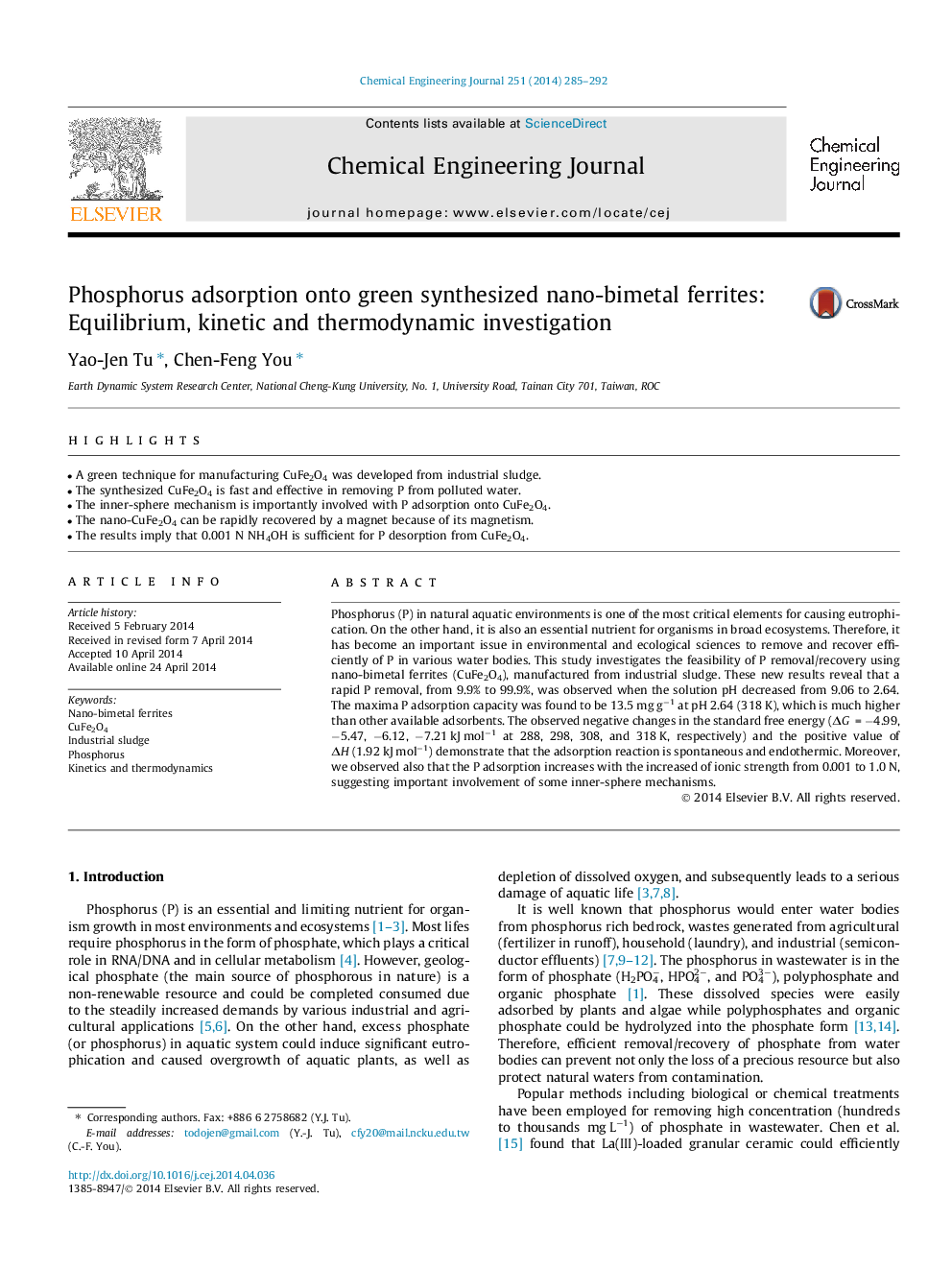| Article ID | Journal | Published Year | Pages | File Type |
|---|---|---|---|---|
| 6586458 | Chemical Engineering Journal | 2014 | 8 Pages |
Abstract
Phosphorus (P) in natural aquatic environments is one of the most critical elements for causing eutrophication. On the other hand, it is also an essential nutrient for organisms in broad ecosystems. Therefore, it has become an important issue in environmental and ecological sciences to remove and recover efficiently of P in various water bodies. This study investigates the feasibility of P removal/recovery using nano-bimetal ferrites (CuFe2O4), manufactured from industrial sludge. These new results reveal that a rapid P removal, from 9.9% to 99.9%, was observed when the solution pH decreased from 9.06 to 2.64. The maxima P adsorption capacity was found to be 13.5 mg gâ1 at pH 2.64 (318 K), which is much higher than other available adsorbents. The observed negative changes in the standard free energy (ÎG  = â4.99, â5.47, â6.12, â7.21 kJ molâ1 at 288, 298, 308, and 318 K, respectively) and the positive value of ÎH (1.92 kJ molâ1) demonstrate that the adsorption reaction is spontaneous and endothermic. Moreover, we observed also that the P adsorption increases with the increased of ionic strength from 0.001 to 1.0 N, suggesting important involvement of some inner-sphere mechanisms.
Related Topics
Physical Sciences and Engineering
Chemical Engineering
Chemical Engineering (General)
Authors
Yao-Jen Tu, Chen-Feng You,
